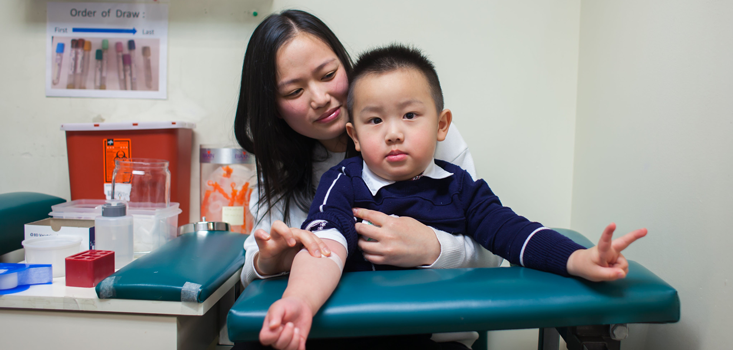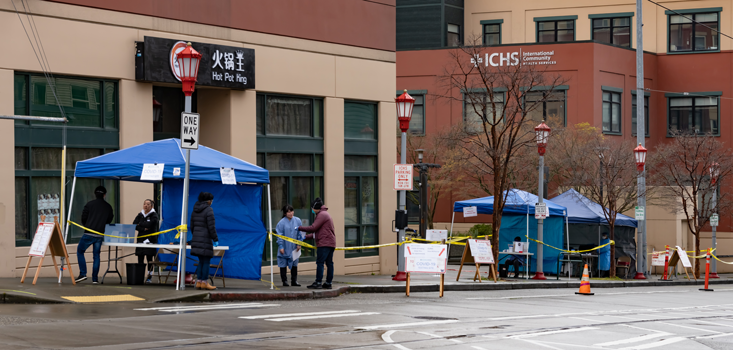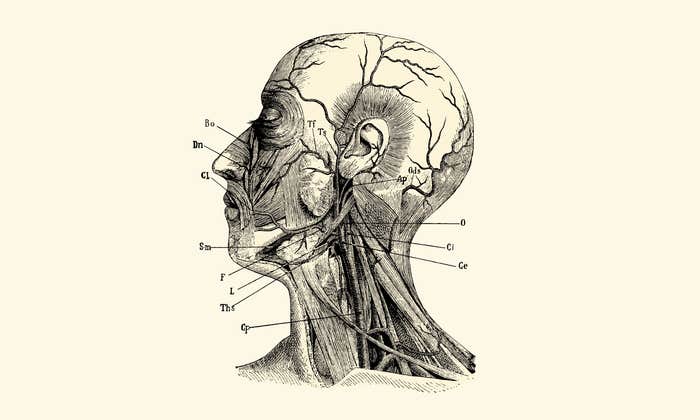Things have been different at the Tumwater Family Practice Clinic since COVID-19 came. Its patients in Washington state are being triaged over the phone, tested at the curbside, and treated by the doorstep. Many patients, afraid of contracting the disease, do not come in. Revenue for the private practice has plummeted almost 50 percent. When it came time for Jennifer Tyler, Tumwater’s clinic administrator, to lay off half her staff, she was “as ready as someone could be.” Tyler hadn’t slept all weekend—Tumwater’s biggest expense is payroll. As Tyler drove past a local high school, now deserted, on her way to the office, she thought about her staff’s families—unemployed husbands, furloughed older daughters, frustrated school-age sons. “It would have been one thing if [staff] weren’t doing their jobs,” Tyler said, but “we fired them only because we couldn’t pay them. It doesn’t seem fair.”
Tumwater Family Practice Clinic is one of the many private primary care clinics, alongside myriad federally funded ones, that form the backbone of American healthcare. Nearly 28 million people rely on almost 12,000 federally funded clinics throughout the country for their healthcare, according to an analysis by Health Affairs, a health policy journal. Two million people depend on 1,000 or so free clinics, and millions more depend on the independent clinics like Tumwater nestled in rural areas and small towns scattered across the country. All told, primary care accounts for half of non-hospital doctor visits annually.
With widespread clinic closures, another major source of local employment vanishes.
Many of these clinics, small businesses in their own right, are struggling to survive the pandemic. According to surveys shared with Nautilus of primary care practices across Washington, Idaho, and California, revenue losses hover around 60 percent. National analyses suggest primary care clinics will face revenue deficits up to $15 billion resulting from the pandemic.
These losses are not likely sustainable: Federally funded clinics maintain operating margins barely above 2 percent. Thousands of federally funded clinics are projected to close if a 50 percent deficit in patient visits continues to hold over the next six months, taking more than 100,000 jobs down with them. Charitable clinics depend on over 200,000 volunteers annually, and many have already closed. Chief among the challenges are the costs to acquire equipment needed to care for their patients during this new normal—things like masks, gowns, swabs, and test kits, not to mention infrastructure for virtual care.
The mass closure of primary care clinics could carry severe repercussions for the physical health of the country, particularly in communities already most vulnerable. Medically underserved areas (including rural regions) and populations (including the poor, homeless, and foreign-born) depend on community centers for care. The vast majority—91 percent—of patients relying on the federally funded primary care network live in or near poverty. Over 80 percent are uninsured or publicly insured, implying that they may not be able to access care in other settings. Since community clinic patients are sicker at baseline than the average member of the United States population, the disease’s diffusion into these communities is worrisome. The majority of medically vulnerable communities already have confirmed COVID-19 cases.
For some residents of Northeast Washington, clinic closures “could be catastrophic,” said Desiree Sweeney, CEO of NEW Health, a community health center network in Washington state. A large population of retirees live in the area surrounded by the stunning natural beauty of what Sweeney calls “the real real outdoors.” For patients of NEW’s clinic in Ione, a community of 447 sandwiched between the Colville National Forest and the Pend Oreille River, the closest alternative would be a one-hour drive over the Mountain Pass, Sweeney said, “assuming the weather holds up.”

With widespread clinic closures, another major source of local employment vanishes. Following the 2008 recession, jobs in healthcare have grown faster than any other sector; since 2018, reported The Atlantic, healthcare is the nation’s largest employer. Often overlooked economic engines, federally funded clinics alone generate over $50 billion and 400,000 jobs annually. About half of these jobs and dollars are indirect benefits to the surrounding communities. The Roots Community Health Center in Oakland, California, owns a factory, Clean360, that produces scented cleaning products and employs people who need more help than others to join the workforce. The Lyndon B. Johnson White House was on to something: It was the Office of Economic Opportunity—not the Department of Health and Human Services—that provided the original federal funding for community clinics.
As these clinics and communities go, so goes the nation. “We have to keep these centers healthy,” said Cheryl Holder, an associate professor at Florida International University’s Herbert Wertheim College of Medicine. “That benefits all of us. Fragmenting the delivery system—it kills us all, in the long run. Or in the short run, as it were.” The livelihood of Main Streets across America depends on the disposable income these jobs create. But the pandemic has forced these clinics into extremis. “Community clinics have always lived hand-to-mouth,” said Jay Gellert, ex-CEO of Health Net. “COVID has simply magnified that fact.” So far, financial support has been modest: The initial $1.3 billion supplement provided to federally funded health centers equated to $46 per patient served—even though COVID-19 test kits alone can cost $35-$50 a pop. Independent and free clinics, which are not federally funded, were excluded.
Clinics are deeply woven into the social fabric of many local communities—and for good reason.
To stay solvent, clinics are scrambling. The Gilman Family Practice in Spokane Valley, Washington, laid off three employees and sent staff home early each day of the workweek. “We have no choice,” Emily Gilman, the clinic’s quality improvement associate, said. “We can’t afford them for one second longer than we need to.” Many clinics are facing similar challenges. One block away at Valley OBGYN, to avoid firings, 100 percent of staff are working part time. At NEW Health, Sweeney had to choose between firing former classmates, athletes she coached, and managers she mentored. As of April 24, according to a survey by Primary Care Collective, a nonprofit organization, 42 percent of primary care practices had flexed, furloughed, or fired employees. Through the end of April, education and health services was second only to the leisure and hospitality industry in terms of lost jobs—losses concentrated in outpatient care clinics.
The last hope standing between many clinics and inevitable bankruptcy was the administration’s Paycheck Protection Program (PPP). But, as other small businesses have found, acquiring funding through the PPP was Odyssean; several clinics, reported in The New York Times, failed to do so. Recently, NEW Health received PPP funding, so were able to hire back their laid-off staff. Even so, the funding “will only cover two months,” said Gilman, and “after that, it’ll be tight.”
For often under-resourced and overlooked communities, COVID-19 represents a perfect storm—a fact increasingly borne out in studies documenting widening disparities in outcomes from the disease. Community clinic closures would have a particularly disproportionate impact on minority communities, like African-American, Hispanic, and East Asian communities, where clinics buttress the health of the neighborhood. Patients receive the care they need to help decrease the danger of diseases new (like COVID-19) and old (like cancer, HIV, and diabetes). “None of these [other] diseases took a vacation just because there’s a pandemic,” said Asquel Getaneh, chief medical officer at International Community Health Services. “If we can’t care for these folks, there will be a lot more, very costly, very human complications beyond COVID alone.”
Clinics are deeply woven into the social fabric of many local communities—and for good reason: Community engagement turns out to be a force-multiplier in the care of patients. By connecting them to the pharmacy, food bank, housing facility, or rehabilitation center, clinics combat the upstream factors of disease. “I can’t provide what patients need within the walls of my exam room,” said Kirsten Meisinger, former Medical Staff President for the Cambridge Health Alliance. “We can’t divorce our medicine from what needs to happen out there to achieve population health.” Kemi Alli, a physician and CEO of the Henry J. Austin Health Center in Trenton, New Jersey, said that community clinics are “by the people, of the people, and for the people.” The ethos is written into law: To maintain their federal funding, qualified centers must devote 51 percent of board seats to patients they’ve served in the community.
The lives of the most vulnerable within the community hang in the balance—and risk falling through the cracks.
The community-clinic movement blossomed alongside the Civil Rights movement, a legacy that continues to this day. The EXCELth Primary Health Center in New Orleans has a patient population that is 70 percent African-American. “Nothing has been this painful for the community since Katrina,” said Shelia Webb, associate director of EXCELth, regarding the pandemic’s impact. “It’s a different kind of trauma. Worse, in a lot of ways.” Urban Health Plan, founded in the South Bronx amid gang wars and race riots, serves 80 percent Hispanic patients and partners with teaching kitchens, workforce programs, and health and science schools. International Community Health Services, founded in Seattle’s Chinatown during anti-miscegenation laws and mounting xenophobia, serves predominantly East Asians. “At a basic level,” Alli said, “we are the conveners and connectors who bridge the medicine with, well, life.”
Community clinics also act as social hubs within the delicate, interdependent, and idiosyncratic ecosystems of local communities. Roots conducts car-seat checks, coordinates housing for the homeless, and puts together DJ-led concerts several times a week in its shaded courtyard. Urban Health Plan holds workforce re-entry programs, sponsors science charter schools—and teaches healthy cooking at La Cocinita de Simpson situated on its main campus. Community Health Center, Inc. in Connecticut provides a domestic-violence shelter and throws Bollywood discos at Vinnie’s Jump & Jive Dance Hall, which it owns. “At first blush, all of this may seem random,” said Kenji Taylor, a physician at Roots and a faculty researcher at the Stanford University School of Medicine. “But it is absolutely critical to create the deep ties and trusting relationships I need to help my most complicated patients get better.”
The loss of these clinics will worsen the access to care for marginalized groups during the pandemic. This may lead COVID-19 to persist in communities least equipped to weather its thunder and surge in patients suffering from complications of common diseases down the road. The lives of the most vulnerable within the community hang in the balance—and risk falling through the cracks. “Outreach, above all else, may be the most powerful medicine we’ve got,” Meisinger said.
The myriad activities the local clinics provide their communities serve to reduce demand for emergency care by catering to patients’ basic needs. Coupled with improved access to care, they are critical to flatten the COVID-19 curve: Studies have found that increasing access to primary care (alongside its accompanying services) is associated with reductions in emergency visits, hospitalizations, and mortality.
This civic symbiosis—in medical, social, and economic terms—is magnified in emergencies. Community clinics, under current circumstances, can assume the role of first responders. This has already been the case for Henry J. Austin, which has partnered with the city of Trenton to coordinate COVID-19 testing. International Community Health Services has set up drive-thru testing with support from community organizations and volunteers. Urban Health Plan has led the Hunts Point Community Coalition’s pandemic response. And EXCELth has delivered social distancing education protocols through the Gaza Missionary Baptist Church.

“To avoid the congestion and shortages we’ve been facing, we must keep clinics intact as a vital part of the public response [to COVID-19],” said Bob Marsalli, CEO for the Washington Association for Community Health. “They are our acute care system’s shock absorber.” In the longer-term, “community clinics must be viewed as essential partners to our recovery from COVID,” said Jay Gellert, “rather than remaining hidden in plain sight.”
To this end, stemming the long-tail of the disease and re-opening the economy depends on serologic testing and contact tracing—activities which community clinics are “uniquely well-positioned to do effectively,” said Paloma Izquierdo-Hernandez, CEO of Urban Health Plan. A recent report found that, while 82 percent of federally funded health centers have the ability to conduct testing, only 44 percent were actively doing so. “So far,” Hernandez said, “we haven’t really been asked [to help with testing].”
As mounting unemployment forces more Americans off private insurance and restrictions discourage travel, the role of community clinics may rise further still. “When the CDC tells you to call your doctor,” said Holder, at Florida International, “they mean your community clinic.” Absent a unified response executed arm-in-arm with community clinics, she suspects that “pockets of infection may persist for a long while.”
The boundaries of those pockets are blurry. During a pandemic, a community is only as immune as its most vulnerable neighbor: A one-digit difference in zip code cannot inoculate the wealthy and well from the suffering of the poor and ill, or the non-essential from the essential worker. “Construction workers, home health-aides, hotel workers, housekeepers, waiters, dishwashers, and Uber drivers are only one or two connections away, stocking your grocery shelves and filling your gas tank,” said Holder.
At the Tumwater clinic, the remaining 19 staff members are trying to “keep things light,” Tyler said. “We send around a couple jokes each day.” One went: What did the pirate say to his crew on his 80th birthday? Aye Matey! “Of course they’re bad ones, ones that make you roll your eyes. But they make you smile,” she said.
“Also,” Tyler added, “they help us cope with how quiet it’s gotten around here.”
Eli Cahan is a masters’ student in health policy at Stanford University as a Knight-Hennessy Scholar and a medical student at NYU School of Medicine.
Lead image courtesy of EXCELth Primary Health Center


























